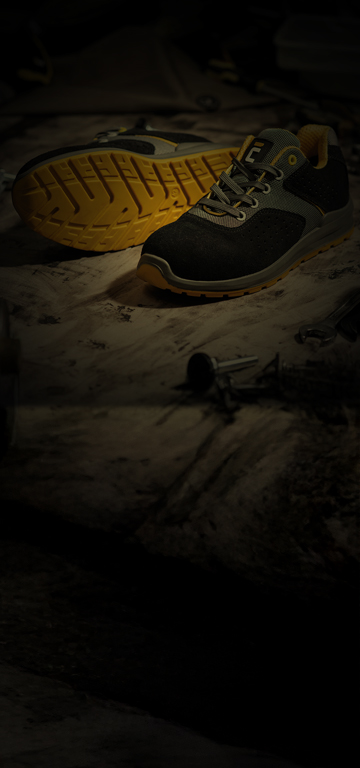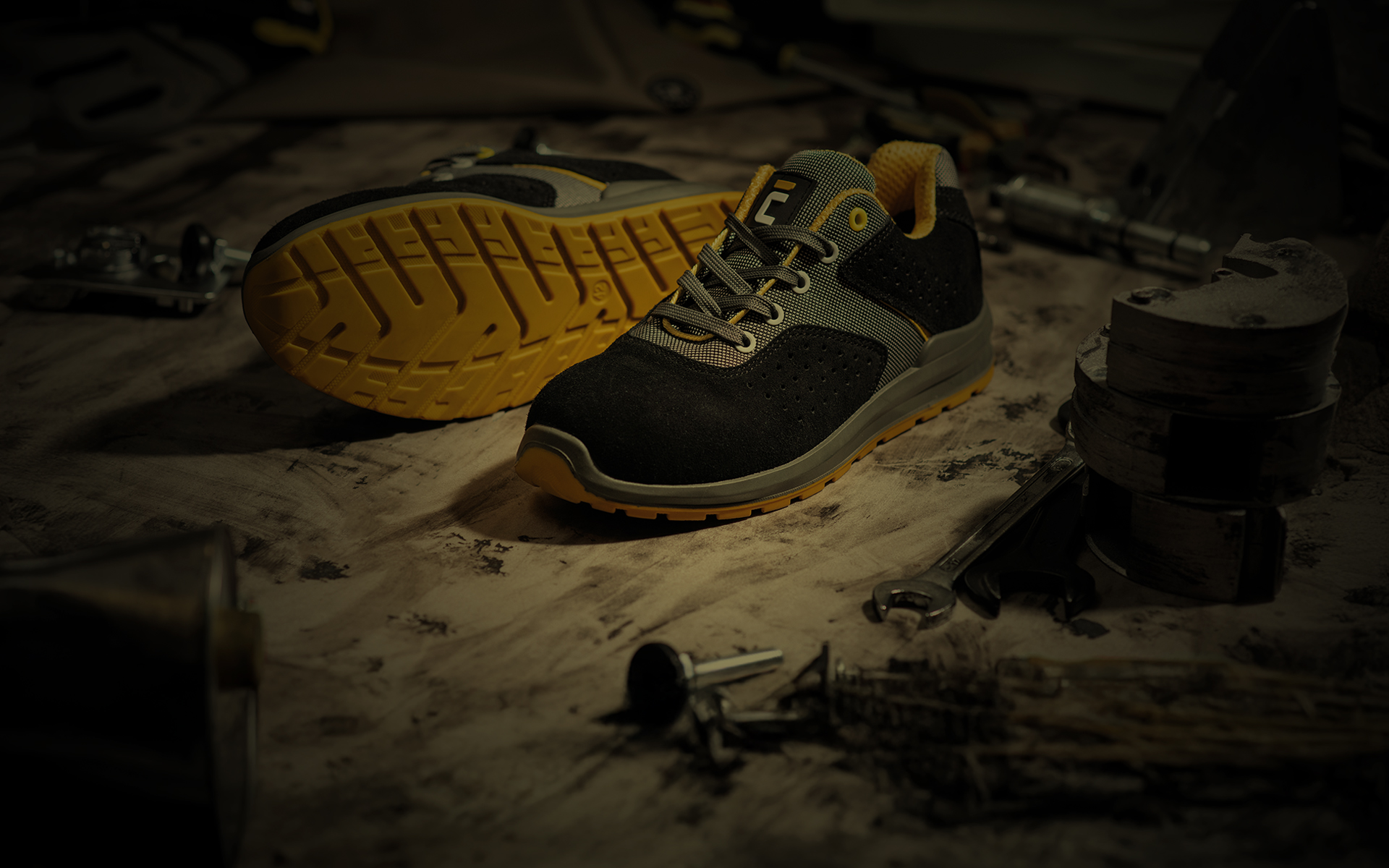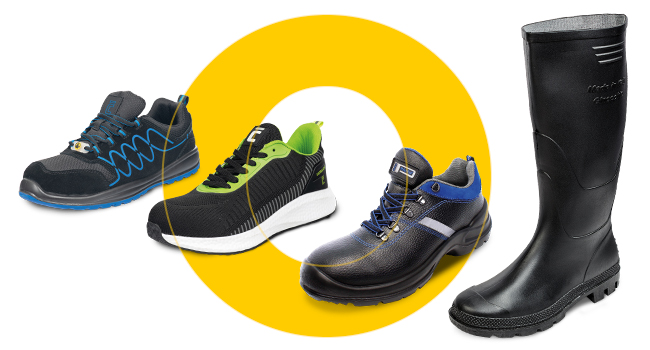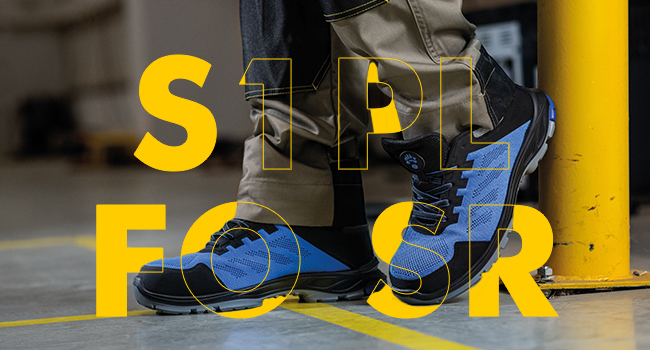
Practical Guide to Footwear Markings

Practical Guide to Footwear Markings
Are you looking for work or safety footwear and not sure which type to choose? When you see labels with letters and numbers like OB, S1P, or S3, it may at first glance look like a secret code. In reality, it is a simple system that immediately tells you whether the shoes are suitable for a warehouse, cold storage, construction site, or even the forest. In this article, we’ll explain how to read the markings, what has changed in the standards in recent years, and how to confidently choose the right footwear.
With a reliable supplier of workwear and personal protective equipment, such as CERVA, you will find a wide selection of safety and work footwear designed for various professions and environments. One type of shoe is suitable for a warehouse, another for cold storage, and a completely different one will be needed by a farmer or a lumberjack. Of course, it is also important that the footwear fits you well, is breathable, not unnecessarily heavy, and comfortable for a long working day. You don’t need to study every model in detail — just read the marking and you’ll know whether it’s designed for indoor or outdoor use and whether it will protect your feet from crushing or puncture.
Occupational footwear (“O”) – when you don’t need special protection

Occupational footwear (“O”) – when you don’t need special protection
Occupational footwear is intended for those whose work does not involve a risk of mechanical injury to the feet. They do not have a protective toe cap. You can recognize them by the marking OB and O1–O7. They must comply with the standard EN ISO 20347.
- OB guarantees the basic requirements of the standard. This means that such footwear must be made of material with increased resistance to wear, tearing, and abrasion, and must have a slip-resistant sole. Each higher class then offers the same as the lower one, plus an additional feature.
- O1 meets the basic requirements of the standard. Additionally, it has a closed heel, antistatic properties, and a sole with energy absorption in the heel area for greater comfort during all-day wear.
- O2 offers the same as O1 but is also resistant to water penetration and absorption.
- O3 provides greater safety, as it includes a puncture-resistant midsole similar to safety footwear. The outsole must also meet higher slip resistance requirements.
- O4 and O5 are waterproof footwear for wet environments, made of rubber or polymers (in simple terms: usually Wellington boots).
- O6 is comparable to O2 but equipped with a waterproof and windproof membrane, making the entire shoe waterproof. It is a robust option for demanding conditions.
- O7 is an enhanced version of O3. It combines puncture resistance with permanent waterproofing. You may also encounter variants O7L (non-metallic puncture-resistant midsole tested against larger nails) and O7S (non-metallic midsole tested against smaller nails).
Safety footwear (“S”) – not just for toe protection

Safety footwear (“S”) – not just for toe protection
In environments where there is a risk of falling objects or a high risk of stubbing toes, safety footwear is always the better choice. According to the updated standard ČSN EN ISO 20345:2022, safety footwear must be equipped with a protective toe cap that can withstand an impact energy of up to 200 J (equivalent to a 20 kg weight falling from a height of 1 meter) and compression up to 15 kN (pressure equal to a 1,500 kg load). Steel toe caps must be corrosion-resistant, and plastic parts of the shoes must be tested for heat and chemical resistance.
This means that in “S-class” shoes your feet will be safe when working in a warehouse, production, construction, or forestry. Safety footwear is marked with the letter S and is now divided into eight categories: SB and S1–S7.
In some categories, there is further subdivision depending on whether the puncture-resistant midsole is made of metal or non-metallic material.
Individual classes

Individual classes
- SB meets the basic requirements of the standard: it has a slip-resistant sole, protective toe cap, and closed heel area (although an open heel is also allowed).
- S1 in addition offers a firm heel, energy absorption in the heel, and antistatic properties.
- S1P, S1PL, S1PS are puncture-resistant versions of S1:
- S1P has a metallic puncture-resistant midsole.
- S1PL has a non-metallic puncture-resistant midsole tested against larger nails (L = large).
- S1PS has a non-metallic midsole tested against smaller nails with a diameter of 3 mm instead of 4.5 mm (S = small). These are suitable for most indoor workplaces.
- S2 has uppers that resist water penetration and absorption for at least 60 minutes. Suitable for dry or damp conditions but not puncture-resistant.
- S3 has the same features as S2 plus a puncture-resistant midsole (metallic or non-metallic in subcategories S3L and S3S) and a treaded outsole. Suitable for demanding outdoor conditions (forestry, agriculture, construction).
- S4 offers the same as S2 but is entirely made of rubber or polymer, making it completely waterproof. Ideal for agriculture or the food industry.
- S5 looks similar to S4 but includes a puncture-resistant midsole and a treaded sole. Depending on the material, it is subdivided into S5, S5L, and S5S. Suitable for demanding and wet environments such as agriculture, construction, fishing, or cleaning services.
- S6 is essentially an S2 but fully waterproof, thanks to both the material and construction (including seams). Ideal for outdoor work year-round in construction, roadworks, gardening, agriculture, forestry, water management, and energy sectors.
- S7 is an S3 in a waterproof version. It has a puncture-resistant midsole (metallic or non-metallic in S7L and S7S). Suitable for demanding and wet conditions (construction, mining, water and sewer management, forestry, agriculture, energy, outdoor assembly, and rescue services).
Protection against specific risks

Protection against specific risks
Sometimes you will also come across additional markings that indicate protection against specific risks. These are particularly important in environments with special demands, such as extreme temperatures, moisture, or chemicals. The abbreviations come from English:
- HRO – outsole resistant to contact with hot surfaces up to 300 °C for 60 seconds. Suitable for asphalt workers, metallurgy, or high-temperature industries.
- HI – thermal insulation of the sole against heat transfer from the ground. Protects when working long-term on hot surfaces.
- CI – cold insulation, ideal for outdoor winter work, cold storage, or freezing plants.
- WRU – water penetration and absorption resistant upper. Suitable for outdoor work where moisture is present, but not prolonged immersion.
- WR – fully waterproof footwear (not only the upper but also seams and construction). Suitable for wet environments.
- FO – outsole resistant to fuel oil, useful for mechanics or industrial workers.
- M – metatarsal protection against impacts on the instep. Used in heavy industry where heavy objects may fall on the foot.
- P – puncture-resistant midsole, protecting the foot from sharp objects on the ground (e.g., nails, shards).
- ESD – footwear that dissipates electrostatic charge, preventing its accumulation. Essential in electronics, automotive, or when handling sensitive components.
- LG – Ladder Grip, a special outsole design ensuring better grip and stability on ladder rungs.
- SC – Scuff Cap, reinforced toe material that prolongs shoe life when frequently kneeling (e.g., flooring installers).
These additional markings help you identify whether the footwear provides not only basic protection but also specialized protection in extreme or specific conditions.
Old stock
The updated standard EN ISO 20345:2022 must be met by safety footwear placed on the market after November 11, 2024. Since European certificates are valid for five years, it is still possible to buy footwear that complies with the old standard, which can be confusing. Under the old standard, footwear was divided only into SB, S1, S1P (S1 with puncture-resistant midsole), and S2–S5.
So how should you choose?
- If there is no risk of falling objects, occupational footwear (OB–O7) is sufficient.
- If you need toe protection, choose safety footwear (SB–S7).
- The higher the number, the more additional features (water resistance, puncture-resistant midsole, or specific protections such as HI, CI, HRO).
It is important to consider the environment and conditions in which you will be working — indoors or outdoors, in dry or wet conditions, whether puncture or slip risks are more relevant. The right footwear will not only protect your health but also make long hours on your feet easier.
Whether you choose a lightweight warehouse shoe or a robust S7 boot for the toughest conditions, the markings guarantee that you will always know what to expect from your footwear.
And if even after reading this article you’re still unsure which footwear is right for you, you can always consult our sales representative, who will help you choose the ideal solution tailored to your needs.